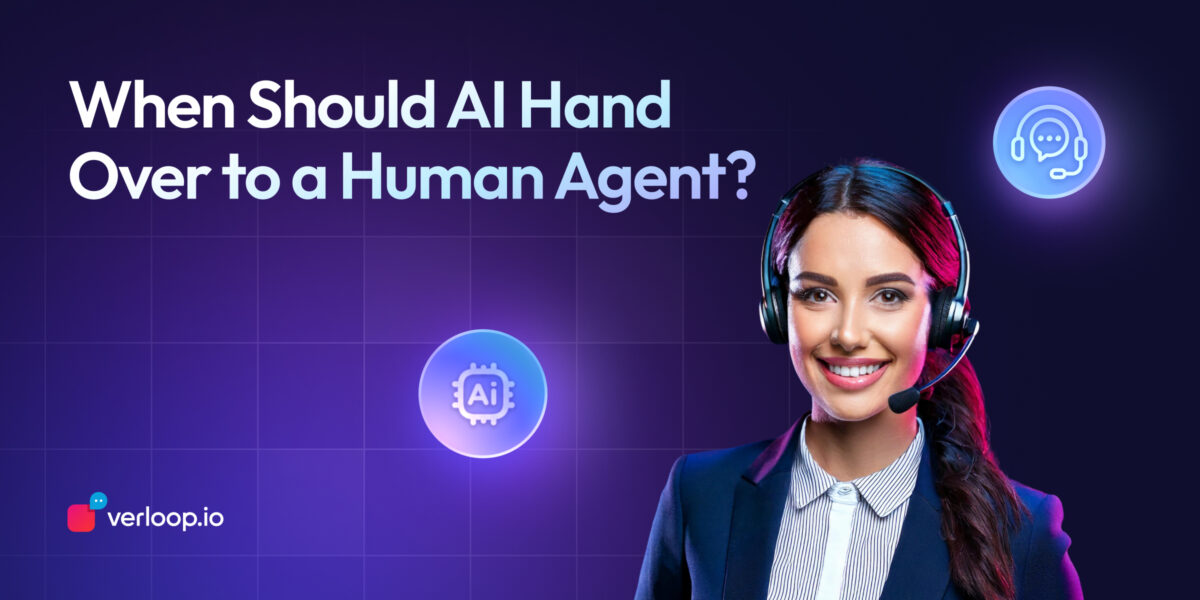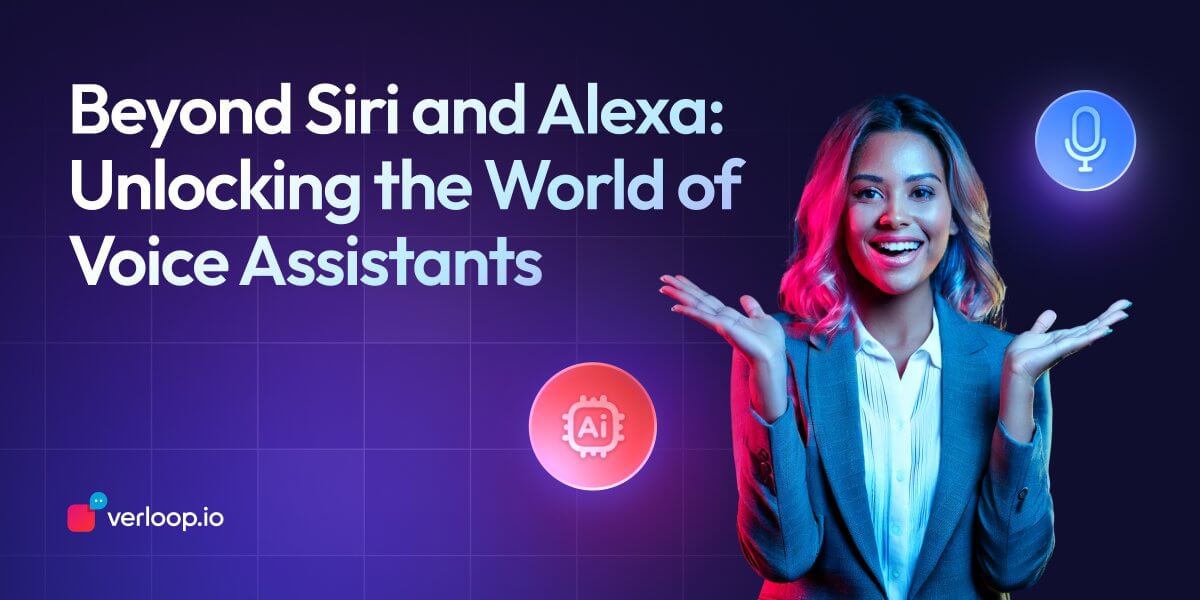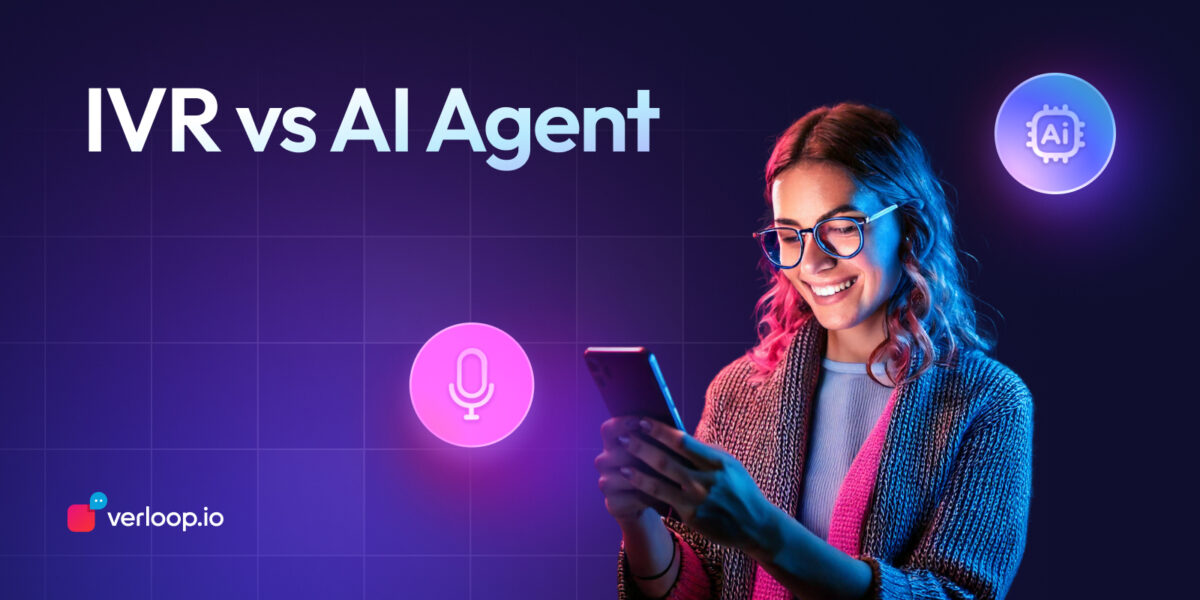When Should AI Hand Over to a Human Agent?
- August 29th, 2025 / 5 Mins read
-
 Aarti Nair
Aarti Nair

When Should AI Hand Over to a Human Agent?
- August 29th, 2025 / 5 Mins read
-
 Aarti Nair
Aarti Nair
AI Agent Handover to Human
AI Agents — in both chat and voice — have become the first line of customer interaction for many businesses. They respond instantly, work 24/7, and can handle thousands of queries at once. For routine tasks like tracking an order, booking an appointment, or resetting a password, they deliver speed and accuracy that human teams alone could never match.
But here’s the question: When does AI stop being enough?
While automation drives efficiency, customer support is not just about solving problems — it’s about understanding people. There are moments when empathy, human judgment, or nuanced decision-making are critical. A frustrated customer asking for a refund, a patient seeking medical advice, or a client disputing a financial charge cannot always be reassured by an AI Agent alone.
That’s where human handover becomes essential. By striking the right balance between automation and human support, businesses can deliver not only efficiency but also trust — ensuring that customers feel heard, valued, and supported, no matter the complexity of their needs.
What is AI–to–Human Handover?
AI–to–human handover is the point in a customer interaction where an AI Agent recognises its limits and passes the conversation to a live human agent. Think of it as a safety net — ensuring that customers never feel stuck in an endless loop with automation.
In practice, this handover can take two forms:
Escalation: when the AI Agent identifies a situation it cannot resolve, such as a complaint requiring managerial approval, and escalates the case to a human agent.
Transfer: when the AI smoothly connects the customer to the right human agent or department, carrying forward the conversation history so the customer doesn’t need to repeat themselves.
For enterprises, this handover isn’t just a fallback — it’s a customer experience safeguard. It shows customers that while AI is fast and efficient, there’s always a human ready to step in when empathy, judgment, or authority are required. The result is the best of both worlds: AI for efficiency and scalability, humans for trust and personalisation.
Why Human Handover is Essential for CX?
AI Agents are excellent at speed and scale. They can instantly answer routine questions, handle repetitive tasks, and ensure customers aren’t left waiting. But customer experience (CX) is about more than efficiency — it’s about trust, empathy, and reassurance. This is where human handover becomes essential.
AI can interpret intent, but humans add emotional context and judgment. For example, an AI Agent can process a refund request, but when a frustrated customer says, “This is the third time this has happened,” it takes a human to respond with empathy and offer a tailored solution. That human touch prevents churn and restores confidence.
It also creates a safety net. Customers know that if their issue is too complex, they won’t be trapped in an AI loop — there’s always a human to step in. According to Zendesk’s CX Trends report, more than 60% of customers expect AI to transfer them seamlessly to a live agent when needed.
Finally, there’s proof in the numbers. In industries like BFSI and healthcare, smooth handovers have been shown to increase first-contact resolution rates by up to 30%, while improving overall customer satisfaction scores. By combining AI’s efficiency with human intuition, businesses achieve both speed and trust — the twin pillars of great CX.
The Role of AI in Customer Service Today
Customer service has changed dramatically in the last decade, and AI Agents are at the heart of this shift. From chatbots answering simple FAQs to advanced voice AI agents capable of handling natural conversations, AI has become the first point of contact for millions of customer interactions every day.
AI’s biggest strength lies in efficiency and scale. It can:
Provide instant 24/7 support without wait times.
Automate repetitive tasks like booking, refunds, or status updates.
Analyse customer intent and sentiment to deliver contextually relevant answers.
Reduce agent workload by deflecting up to 60–70% of routine queries.
At the same time, AI is evolving. With large language models (LLMs) powering AI Agents, they are no longer limited to scripted flows. They can understand variations in language, process unstructured queries, and even maintain conversation history for smoother interactions. This means AI isn’t just answering — it’s actively participating in meaningful customer conversations.
However, while AI sets the stage for speed and accessibility, the human element remains irreplaceable in certain moments. That’s why the best customer service models today combine the strength of AI Agents with the empathy of human agents, ensuring customers get both fast resolutions and the reassurance of personal care.
Key Scenarios: When Should AI Hand Over to a Human Agent?
AI Agents excel at handling routine queries, but knowing when to step aside is what makes them truly valuable. Here are the moments when human handover becomes essential.
1. Complex or Unstructured Queries
AI can manage predictable questions such as checking balances or tracking deliveries. But when queries become layered and ambiguous, human judgment is required. For instance, in insurance, a customer who says, “I was hospitalised last month, but my policy lapsed while I was away. Can I still claim my expenses?” isn’t just looking for a yes-or-no answer — they need nuanced guidance that AI alone cannot deliver.
2. Emotional or Sensitive Conversations
AI Agents can detect frustration or urgency in tone, but only humans can diffuse emotions with empathy. Consider a bank customer reporting fraudulent transactions: the reassurance they seek goes beyond quick responses. It requires calm explanations, a sense of accountability, and assurance that their finances are safe — something only a human can provide.
3. Escalations Requiring Authority
Certain scenarios demand decisions beyond an AI’s programmed scope. In e-commerce, for example, when a customer requests a refund after the return window has expired, the AI can collect details, but a human must step in to approve exceptions and preserve goodwill.
4. Prolonged Conversations Without Resolution
There are times when customers loop through automated troubleshooting without finding an answer. A broadband user stuck in repeated bot-led steps for an outage doesn’t want to try a fourth time; they want a human technician who can diagnose and resolve the issue. Handing over at the right time prevents frustration and builds trust.
5. VIP or High-Value Customers
While AI can handle routine needs for everyone, premium clients expect a higher level of personal attention. A corporate SaaS client might begin with AI Agents for quick clarifications, but when it comes to renewal negotiations, direct engagement with a human account manager signals priority and strengthens the relationship.
6. Compliance and Risk-Sensitive Situations
In highly regulated industries like BFSI or healthcare, compliance often requires human oversight. An AI Agent may gather KYC documents, but regulatory approval still demands human verification. This ensures businesses stay compliant while giving customers confidence in the process.
How AI and Humans Can Work Together Seamlessly?
The handover between AI Agents and human agents should never feel like a break in the conversation. Instead, it should be a smooth relay where the AI sets the stage and the human takes it forward.
AI can start by pre-qualifying queries — collecting information like order numbers, issue types, or customer preferences before the human steps in. This not only saves time but ensures the customer doesn’t have to repeat themselves, one of the biggest frustrations in customer service. Imagine reporting a faulty product: the AI gathers the order ID and troubleshooting details, and when the human agent joins, they already have full context to act quickly.
Seamless collaboration also means real-time knowledge sharing. While humans focus on empathy and problem-solving, AI can work in the background, providing suggestions, pulling customer history, or surfacing relevant policies. This kind of support acts like a co-pilot, helping agents resolve cases faster and with more accuracy.
And most importantly, the handover must be transparent. Customers should know when they are speaking with an AI Agent and when a human joins in, without any confusion or gaps in response. Done well, the transition feels natural — almost like one conversation, powered by both speed and empathy.
Platforms like Verloop.io Voice AI Agent already make this possible by ensuring that when an escalation occurs, the conversation history flows directly into the agent’s dashboard. The customer feels continuity, the agent feels empowered, and the brand delivers service that’s efficient yet human at its core.
Best Practices for Implementing Human Handover in AI Agents
Getting human handover right is as important as knowing when to trigger it. A poorly managed transition can undo all the efficiency AI Agents bring, leaving customers frustrated. Here are some best practices that ensure the process is seamless and effective.
1. Define Clear Escalation Triggers
Not every query needs a human, but the ones that do should be recognised instantly. Setting rules around keywords, unresolved attempts, or negative sentiment helps AI know when to hand over. For instance, if a customer repeatedly types “not helpful” or expresses frustration, the AI should escalate without delay.
2. Preserve Context During Transfer
One of the biggest pain points for customers is having to repeat themselves. An effective handover ensures that everything collected by the AI — from order details to previous troubleshooting steps — is passed to the human agent’s screen. This continuity makes customers feel valued and speeds up resolution.
3. Be Transparent with Customers
Customers should always know when they’re speaking to an AI and when a human has joined the conversation. A simple message like “I’m transferring you to a support specialist who can help further” builds trust and avoids confusion.
4. Train Human Agents for AI Collaboration
Handover is not just about technology — it’s about people. Human agents should be trained to pick up conversations naturally, using the context provided by AI. They should also be comfortable using AI suggestions as a co-pilot, rather than seeing it as competition.
5. Monitor Handover Metrics
Success lies in measurement. Tracking data like escalation rate, resolution time post-handover, and customer satisfaction scores helps refine the process. If handovers happen too often or too late, adjustments can be made to improve both AI performance and agent readiness.
When done right, handover isn’t a weakness in the AI workflow — it’s a strength. It ensures customers get the best of both worlds: the speed of automation and the empathy of human care.
Challenges in Human Handover and How to Overcome Them
Even though AI–to–human handover is essential, getting it right isn’t always easy. Poorly managed transitions can frustrate customers and undo the value AI brings. Let’s look at the common challenges and how businesses can address them.
1. Latency During Transfer
A few seconds of silence can feel like an eternity for a customer waiting mid-conversation. If the handover isn’t instant, customers may assume they’ve been disconnected. The solution lies in real-time routing systems that immediately alert available agents, while the AI keeps the customer engaged with a holding message.
2. Loss of Context
Nothing frustrates a customer more than repeating themselves. If the details captured by AI aren’t carried forward, the human agent starts from scratch, wasting time and eroding trust. This can be avoided by ensuring conversation history, intent, and collected data are passed directly into the agent’s dashboard. Platforms like Verloop.io already make this seamless.
3. Over-Escalation or Under-Escalation
If the AI hands over too often, agents get overloaded. If it waits too long, customers feel ignored. The key is to use smart escalation triggers such as sentiment detection, repeated failed responses, or requests that require authority. This balance ensures AI handles the simple, while humans take the complex.
4. Compliance and Risk Issues
In industries like healthcare or BFSI, incorrect handling during handover can lead to compliance risks. For example, missing a step in verifying customer identity could expose sensitive data. The answer lies in pre-defined compliance protocols, where AI collects all necessary verification before the transfer, so humans can focus on the decision-making.
5. Training Gaps for Agents
Handover is a two-way process — agents need to know how to pick up naturally where AI leaves off. Without training, conversations can feel disjointed. By investing in AI–human collaboration training, agents learn to trust AI’s input, use its suggestions, and maintain a fluid conversation style.
When these challenges are addressed, handover stops being a pain point and becomes a competitive advantage, ensuring that customers never feel abandoned, no matter how complex their needs are.
The Importance of Human Oversight in AI-Driven Support
AI Agents are becoming more intelligent every day, but no matter how advanced they get, human oversight remains critical. Why? Because customer service isn’t just about answering questions — it’s about accountability, fairness, and trust.
AI can automate tasks, detect sentiment, and even personalise interactions. But without human checks, there’s always the risk of errors, misinterpretation, or responses that feel robotic. Imagine a frustrated customer who receives a technically correct but emotionally flat answer. The issue may be solved, but the customer still leaves dissatisfied. A human agent can bridge that gap by adding empathy and reassurance.
Oversight is also vital for compliance and risk management. In sectors like healthcare, banking, or insurance, sensitive data and high-stakes decisions demand human validation. An AI Agent may verify documents or flag suspicious activity, but it takes a human to approve, investigate, and ensure processes meet legal and ethical standards.
Finally, human oversight allows AI to continuously learn and improve. By reviewing escalated conversations, feedback loops help refine AI performance, reduce future errors, and create smoother customer experiences over time.
In short, human oversight isn’t a fallback — it’s a safeguard. It ensures that automation delivers speed and scale, while humans guarantee trust, empathy, and accountability. Together, they form the backbone of effective, AI-powered customer support.
How to Design an Effective AI–Human Handover Process?
A smooth AI–to–human handover doesn’t just happen on its own — it needs to be carefully designed. The goal is to make the transition feel effortless for the customer while ensuring agents have all the context they need to step in confidently. Here’s how businesses can achieve it:
1. Map the Customer Journey
Start by identifying where handovers are most likely to occur in your support flows. These are usually at points of high complexity, compliance checks, or where customer sentiment dips. By mapping these journeys, you can anticipate escalation points rather than leaving them to chance.
2. Set Clear Escalation Rules
AI Agents should know exactly when to step aside. This could be based on:
Keywords or intent signals (e.g., “speak to human” or “not helpful”).
Sentiment analysis detecting frustration or urgency.
Unresolved loops where a query remains unanswered after a few attempts.
These rules ensure customers aren’t stuck repeating themselves endlessly.
3. Preserve Context During Transfer
One of the most important elements of handover is continuity. The AI should pass along all relevant information — customer details, order IDs, conversation history, and troubleshooting steps already tried. This allows the human agent to pick up seamlessly without asking customers to start over.
4. Keep Customers Informed
Transparency is key to building trust. Let customers know when they are being transferred, and assure them that a specialist is joining to help. Even a simple message like “I’m connecting you to one of our team members for further assistance” makes the process feel smooth and intentional.
5. Equip Human Agents with AI Insights
Don’t stop at passing conversation history — give agents real-time AI suggestions, sentiment insights, and knowledge base recommendations. This way, the human can focus on empathy and decision-making while AI handles the background analysis.
6. Test, Monitor, and Optimise
The best handover processes evolve with usage. Track handover metrics such as escalation rate, average resolution time post-handover, and customer satisfaction scores. Use these insights to fine-tune escalation triggers and agent training for continuous improvement.
Designing an effective handover isn’t about choosing AI over humans — it’s about blending their strengths. When AI handles routine work and humans step in at the right moment, customers experience speed, empathy, and trust all in one journey.
Building Trust with AI + Human Synergy
At its best, customer support is a partnership between automation and human care. AI Agents bring speed, accuracy, and round-the-clock availability — but humans bring empathy, judgment, and the ability to resolve complex or sensitive issues. Neither can fully replace the other.
The most effective support strategies don’t see handover as a weakness of AI, but as a strength of the system. By designing smooth transitions, preserving context, and empowering agents with AI insights, businesses create experiences that feel effortless for customers.
As recent surveys show, customers expect the convenience of automation, but also the reassurance that a human is available when needed. Brands that master this balance will not only reduce friction but also build deeper trust and loyalty in the long run.
It’s clear: the future of CX lies not in choosing between AI and humans, but in letting them work together seamlessly.
Ready to explore how AI + human synergy can transform your customer support? Book a demo with Verloop.io today and see it in action.
FAQs on AI–to–Human Handover
1. What does AI–to–human handover mean in customer service?
AI–to–human handover is when an AI Agent transfers a customer query to a live human agent. It ensures customers get the efficiency of automation while still having access to empathy, judgment, and decision-making from a person when needed.
2. Why is human handover important in AI-powered support?
Human handover ensures that customers are never trapped in an AI loop. It’s especially critical for complex queries, sensitive conversations, or situations requiring compliance oversight. This balance builds trust and keeps customer satisfaction high.
3. How can AI Agents decide when to escalate to a human?
Escalation can be triggered by specific keywords (e.g., “talk to human”), repeated unresolved attempts, or sentiment analysis detecting frustration. Businesses can also configure escalation for VIP customers or compliance-heavy cases.
4. What are the biggest challenges in AI–to–human handover?
Common challenges include latency during transfer, loss of context, over-escalation, and compliance risks. These can be overcome by using real-time routing, preserving conversation history, and training agents to collaborate with AI effectively.
5. Do AI Agents reduce agent workload even with handovers?
Yes. AI Agents handle routine, repetitive queries, freeing human agents to focus on high-value or complex cases. Even when handovers happen, AI pre-qualifies and collects data, making human intervention faster and more efficient.
6. Which industries benefit most from AI + human handover?
Industries like BFSI, healthcare, travel, and e-commerce benefit significantly. These sectors require both fast automation and empathetic human oversight — whether it’s for fraud reports, patient consultations, booking issues, or VIP customer care.











